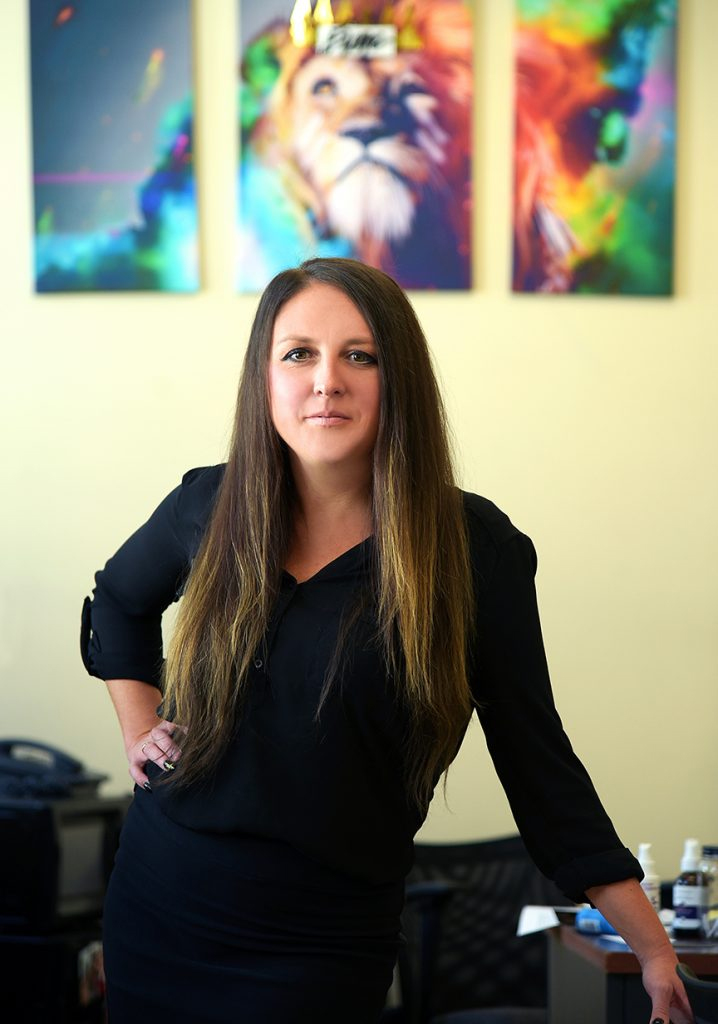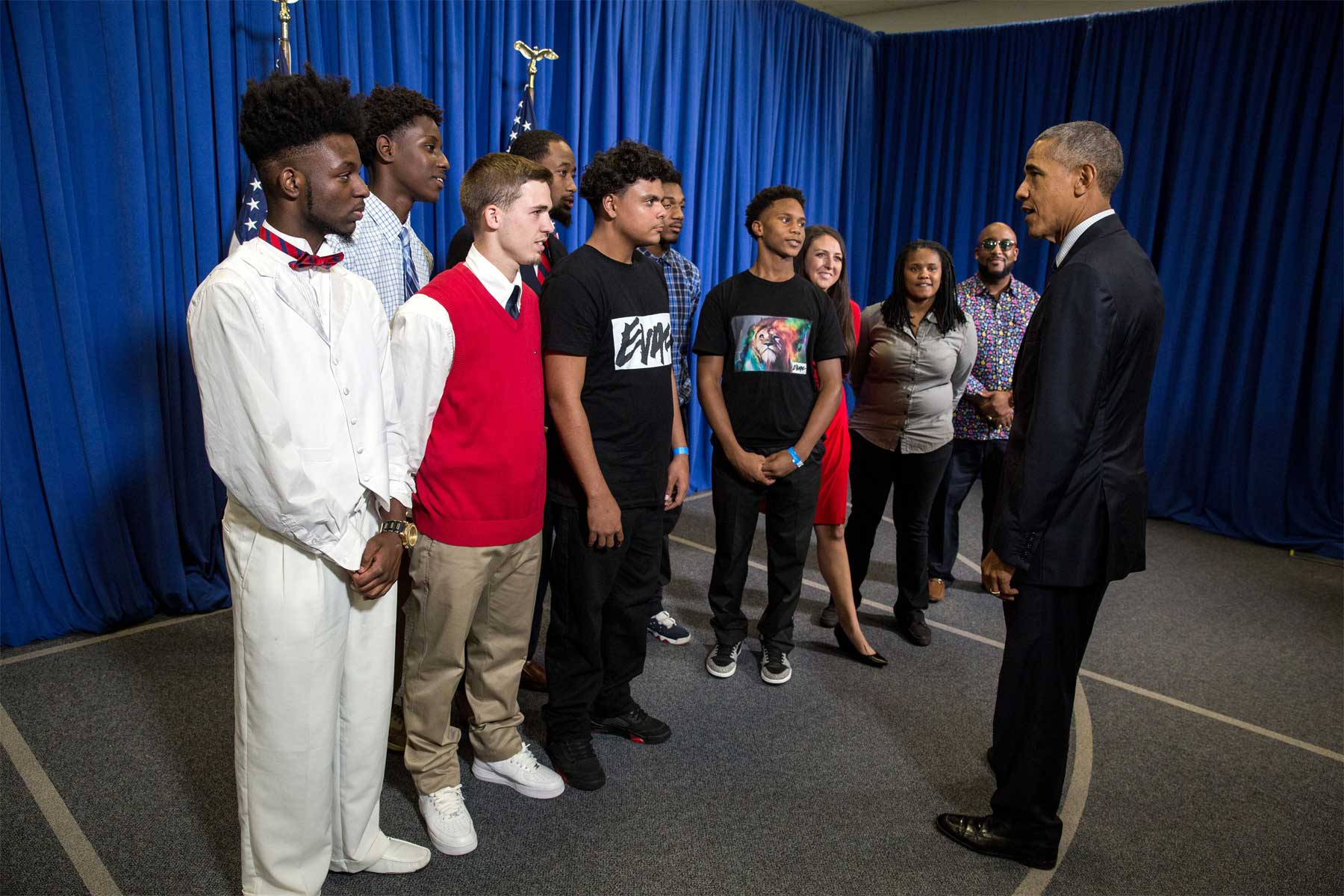
High school teacher Amy Donofrio, BSED ’08, sparked a movement reframing the narrative around “at-risk” students at her Jacksonville, Florida, school. Photo by Richard Wilson, BSVC ’90
Four years ago, the Jacksonville, Florida, student found those qualities in Amy Donofrio, whose leadership class would take him further than he could imagine.
Donofrio, BSED ’08, had recently started her teaching position in Robert E. Lee High School, where one in three students drops out every year, according to City Year Jacksonville, a nonprofit that works with students to overcome the external factors that can be barriers to academic achievement.
When she walked into her leadership class in 2015, the challenge ahead of her became clear—most of the 15 students in the room were considered “at risk,” or more likely to fail out of school. Unfazed, she motivated her class to launch a movement reframing the narrative around “at-risk” students.
“I feel like they’re walking miracles and they’re living heroes,” Donofrio says of the students who started what is now called the EVAC Movement .
The final member of that original cohort graduated in May, marking four years since the EVAC students began using their personal experiences to start a dialogue about juvenile justice and advocate for their peers. It’s a journey that’s taken Donofrio and her students to the White House, Capitol Hill, and the TEDx stage. Along the way, her students learned self-empowerment, and she learned more about being a teacher than she ever expected.
A Born Teacher
Born in Jacksonville, Donofrio and her family moved often before finally settling in Cincinnati when she was in middle school. Even then, she knew she wanted to be a teacher.
“I think maybe just from moving around and not necessarily having this base that I considered home geographically, I was always really drawn to the idea of how schools are a community and a place to feel home,” Donofrio says, “a place that you watched people grow and people can keep coming back to.”
She later found that base in OHIO’s Patton College of Education among a group of friends she’s still in touch with.
Since graduation, Donofrio has worked in a variety of classroom settings, from advising ninth-graders at Meigs High School near Athens to teaching English as a Second Language classes in Peru. Now in her seventh year teaching English and speech at Robert E. Lee High School, she recognizes a change in her teaching style. Always one to push her kids to their full potential, “now I do that in partnership with knowing the whole kid and doing it at their pace and understanding that education is not one-size-fits-all.”
“With a lot of our kids, if you don’t know and love and have a relationship with them as a person, you’re never going to get them to the content,” she says.
Kids Over Content
Donofrio’s experience on the subject didn’t come easily. She knew the statistics, but she also knew she saw leadership potential in her students. That, and a willingness to share their stories.
So that’s what they did. Storytelling eventually became the cornerstone of the class, bonding the students together through their common experiences, which included incarceration, murdered loved ones, and police brutality.
Sharing these experiences with each other spurred them to use their personal stories to create change. In-class roundtable dialogues with police officers and local officials rapidly snowballed into the class presenting at the White House, meeting then-President Obama, and starting a collaboration with Harvard University.
“What they’ve each done individually is against all odds, against all statistics—having hope in themselves,” Donofrio says. “And the beautiful thing is that it’s not just about them. They’ve wanted to do something that shows the generation behind them that there’s hope.”
So instead of “at risk,” the EVAC members began calling themselves “at hope.” That idea is embedded in their very name: “EVAC” is “cave” spelled backward, a reference to Plato’s “Allegory of the Cave,” in which prisoners who are born and raised in darkness cast off their shackles with the help of a liberator and go out into the world, expanding their horizons.
It’s a story Donofrio tells all her classes, saying it contains a lesson that rings true for all students: They must be in charge of their own journeys.
“For things that we haven’t experienced, we need to make the people closest to the pain the experts on what they’re going through and not question people’s experiences,” she says.

President Obama meets with Donofrio and her students in November 2016. Photos courtesy of Amy Donofrio
Giving Hope
Morrell, one of the original EVAC members, graduated Lee High School in 2018. Today, the impact of the experience and Donofrio’s care has led him somewhere he didn’t expect.
He wants to be a teacher.
“Being able to see someone be able to make a difference in young people’s lives, I wanted that opportunity to do that for the school I love,” he says.
That’s just what Donofrio and her fellow teachers hope to accomplish every day. To that end, she has some advice: Be humble, be compassionate, be a tireless advocate for courses and activities that promote students’ well-being.
“I know that money is tight, and our schools are dealing with more than it’s honestly fair to deal with,” she says, but there are creative ways to weave programs like EVAC into the curriculum.
“Speaking your story or things you’ve been through to your peers, building community, debating things that matter,” she says, “there’s always room somewhere within the school day.”



